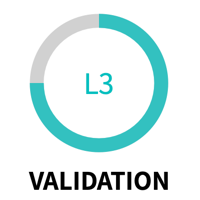 |
Single-cell mRNA-seq with integrated barcoding
|
 |
PUBLISHED ON: FEBRUARY 08, 2017 | REV A
SUPPORTED IFCS: Open App IFC
NUMBER OF IFC RUNS: 7
Overview
We developed an optimized 5′ selective workflow where all the cell indexing is done prior to fragmentation. With our protocol, cell indexing can be performed in the Fluidigm C1™ microfluidic device, resulting in a significant reduction of cost and labor. We also designed optimized unique molecular identifiers that show less sequence bias and vulnerability towards sequencing errors resulting in an improved accuracy of molecule counting. We provide comprehensive experimental workflows for Illumina and Ion Proton™ sequencers that allow single-cell sequencing in a cost range comparable to qPCR assays.
Protocol: Single-cell mRNA-seq with integrated barcoding | Duration (H:M): 8:00

Tested Primary Cells or Cell Lines
Cell Name |
Cell Type |
Source |
|---|---|---|
| HEK293 | Human embryonic kidney | Cell line |
| HNEC | Human airway epithelial cells | Primary |
| Mouse cutaneous squamous cell carcinoma | Cell line | |
| Human chronic myeloid leukemia | Cell line |
Performance
Reads were preferentially located close to the 5′ end of transcripts. Individual ERCCs were highly correlated between cells. Gross ERCC molecule counts and UMI counts for individual ERCC spike in RNA were similar for all cells indicating that mRNA was captured with comparable efficiency. The average ERCC cloning efficiency was 26%, i.e., close to the efficiencies recently reported after stringent UMI error correction. We performed two additional HEK293 cell single-cell sequencing experiments to test the reproducibility of our protocol. Mean mRNA expressions from the three experiments correlated well, despite the fact that the experiments were performed over a period of six months with HEK293 cells at different passage numbers. While all other current single-cell transcriptome profiling approaches were specifically designed for Illumina sequencers, our approach is essentially platform-independent. After replacement of some oligonucleotides, the protocol designed for Ion Torrent sequencers was adapted for sequencing on Illumina sequencers. Interestingly, the correlation between the two distinct biological replicates sequenced on two different sequencers (R=0.95) is close to what we obtained when replicates were sequenced on the same platform (R=0.96–0.97). Our on-chip barcoding strategy strongly reduces library preparation cost for the Fluidigm 96-cell IFC to essentially the cost of the microfluidic chip. Shallow sequencing with just 50,000 reads per cell was shown to be sufficient for cell type classification and biomarker identification. With 50,000 reads per cell we detect 54% and 28% of the maximally detected genes and transcript molecules, respectively. With 0.5–1 million reads we detect 80–93% of the transcript molecules and 90–97% of the expressed genes that we find at our maximal, almost saturating sequencing depth.
Resources
Publications or Articles
Performance data
For Research Use Only. Not for use in diagnostic procedures. Patent and License Information: www.standardbio.com/legal/notices. Trademarks: www.standardbio.com/legal/trademarks. Any other trademarks are the sole property of their respective owners. ©2025 Standard BioTools Inc. All rights reserved.
